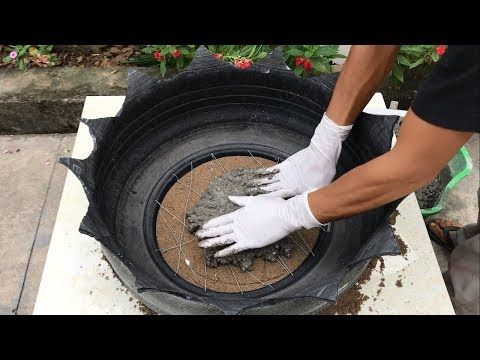The news said snow is on the way. My winter tires need some air. How can I inflate my car tires at home?
Will Baldwin · Answered on Nov 13, 2021
Reviewed by Shannon Martin, Licensed Insurance Agent.
Very smart of you to think of this now before the snow. To inflate your tires at home, you’ll need:
Once you have your supplies:
You should be all set! If you notice your tires still seem underinflated, consider visiting a auto repair shop. They can diagnose any potential leaks or issues.
Once your tires are ready for winter, make sure your car insurance is as well with the Jerry app.
Jerry gathers competitive and personalized quotes from more than 50 top insurance companies. The average Jerry user saves $879 a year on car insurance.
MORE: How to check and add air to car tires
Car MaintenanceCar OwnershipCar Repair
View full answer
WHY YOU CAN TRUST JERRY
Jerry partners with more than 50 insurance companies, but our content is independently researched, written, and fact-checked by our team of editors and agents. We aren’t paid for reviews or other content.
Browse More Content
How To Get an Inspection If Your Brake Fluid Is Black or Brown
How to Replace a Speed Sensor
Car Heater Blower Motor Replacement
Car Door is Sagging Inspection
Differential Output Seal Replacement
Chevrolet Impala Limited Police Insurance Cost
Chevrolet Malibu Ltz Insurance Cost
Toyota 86 Gt Insurance Cost
Toyota Celica St Insurance Cost
Chevrolet Silverado K1500 Lt Insurance Cost
Park Hills Car Insurance
Moore Haven Car Insurance
Little Chute Car Insurance
Herrin Car Insurance
Long Branch Car Insurance
We have a beat-up old vehicle on the back of our property that’s next step can only be the scrap yard. The one problem is, I have no idea where the title is. Do I need it?
The one problem is, I have no idea where the title is. Do I need it?
Will Baldwin
Nov 13, 2021
My front passenger’s window is stuck halfway down. I heard it’s going to rain all weekend. How can I fix my window?
Will Baldwin
Nov 13, 2021
Last night my friends and I were talking about oxygen sensors. I’ve never been much of a car person and I have to ask, how many does a car usually have?
Will Baldwin
Nov 13, 2021
Browse All Questions
Can a low cost of living and world-class whiskey outweigh brutal summer heat and violent crime? Check out all the pros and cons of living in Tennessee.
R.E. Fulton
Aug 04, 2022
You can reset your Dodge Durango’s climate control system by pressing and holding two buttons on your control panel. Here’s how to do it.
Here’s how to do it.
Patrick Price
Sep 19, 2022
A low-slung cockpit and 540 horsepower make the 2017 Audi R8 Coupe a cut above the rest of the vehicles in its class. Learn more here.
Rob Shapiro
Aug 16, 2022
Car Warranties
Allstate
Insurance Brokers and Agents
Total Loss Car
Company Cars
Car Storage
Bundling
Wind Damage
Car Financing
Nevada
Travelers
Flood Insurance
North Carolina
Dairyland Insurance
MedPay
Dodge Viper
Hit and Run
Toyota
Car Leasing
Roadside Assistance
Luxury Cars
Low Cost Auto Insurance Program (CLCA)
Florida
Safeco
Auto and Home Insurance
No long forms
No spam or unwanted phone calls
Quotes from top insurance companies
Find insurance savings — it's 100% free
Toyota
Hyundai
Mercedes-Benz
Subaru
Chevrolet
Mitsubishi
You may have decided to inflate your car tires at home rather than going to a gas station.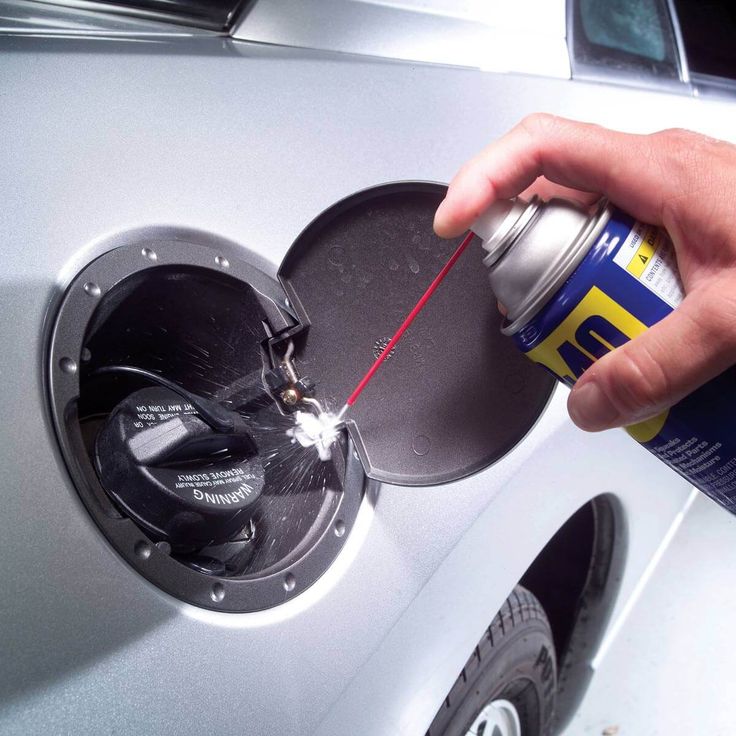
Or, maybe your car tires have betrayed you just before you are going to start a long drive, you don’t even have time to go to a gas station.
Whatever your trouble is, we are going to help you to fix it. After reading this, you’ll get a clear answer of how to Put Air in Car Tires at home.
See, what’s exactly there for you.
What Things Will You Need?Only three items you will need to inflate your tires. Let’s see what are those-
That’s it! Let’s go for the steps.
Table of content:
We will show you how to inflate a car tire without a pump. This will be easy and won’t take much time. Now, Look over the following steps.
This will be easy and won’t take much time. Now, Look over the following steps.
Eyeballing isn’t enough, use a pressure gauge to check the tire pressure. There are three types available pressure gauge in the market-
We recommend you to use the last one, digital type pressure gauge. This one will provide you the accurate readouts of current pressure.
Step-2: Find the recommended pressure levelIn this step, you will need the user manual that was given by the manufacturer. You can also find it on a yellow sticker in the door jamb on the driver’s side.
The normal range is from 195 to 250 kPa (kilopascals) or from 28 to 36 psi (pounds per square inch).
Step-3: Check the tire pressureBefore you start inflating the tires, check their pressure with the tire gauge you picked before. How to do this?
A black/silver colored valve stem cap is positioned on your car tire.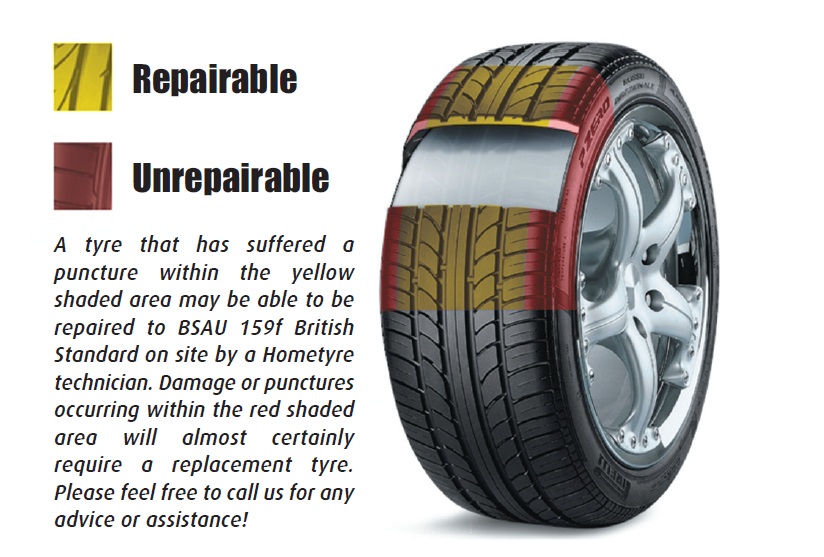 Remove the cap and keep it in your pocket so that you don’t lose it.
Remove the cap and keep it in your pocket so that you don’t lose it.
Now, press down the open end of the tire gauge onto the valve stem. You have to hold it firmly before getting a hissing sound because of releasing a little amount of air. Note down the readings that are shown by the tire pressure gauge.
For details, you may learn how to check tire pressure yourself.
Step-4: Calculate how much pressure you need to addIt’s time to determine how much air you will add to the tires. You have to compare the recommended PSI (set by the manufacturer) with the pressure you found in the gauge.
Subtract the current pressure readout (you’ve got from the gauge) from the standard PSI. You will find the needed amount of pressure.
Step-5: Inflate the tiresBefore inflating, two more words for you. We are using a tire inflator here instead of a compressor. Because tire inflation doesn’t demand a higher PSI. Moreover, the tire inflators are handier and cheaper than air compressors.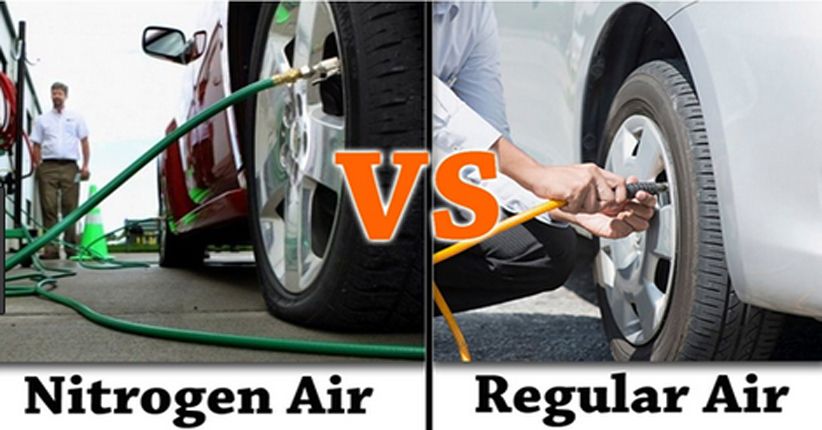 Now, turn on your tire inflator. Place the air hose nozzle fitting on the valve stem and press the lever down. You will hear a hissing when the air starts flowing through the hose.
Now, turn on your tire inflator. Place the air hose nozzle fitting on the valve stem and press the lever down. You will hear a hissing when the air starts flowing through the hose.
But, if you notice the air is going around the valve then sorry, you don’t have a tight connection. Make it tighter and go for the other three tires.
Step-6: Read the air hose gaugeRead the gauge now to know whether you’ve reached close to the right amount or not. We mentioned the recommended level earlier. More specifically, the perfect amount of pressure is about 32 psi.
Step-7: Replace the stem capLastly, you need to replace the stem cap if the tires are properly inflated. Now sit back, buckle up and enjoy your ride.
6 Additional Hacking Tips for YouThese tips will help you to be aware of some factors that you must need before inflating your car tires.
1. When you check the tire pressure, make sure the tires are cooled down. Tires get hot on the road (for the fraction). So what? Well, warm air will add false pressure readings in your tires.
Tires get hot on the road (for the fraction). So what? Well, warm air will add false pressure readings in your tires.
Note it down that, at least 30 minutes needed to cool down the tires. So, check after 30 minutes from stopping the car.
2. Under-inflation causes permanent damage for your tires. When the tires get too hot, the rubber begins to degrade which leads to a rupture in the sidewall of the tires.
So, be careful and inflate the tires exactly when it’s needed.
3. In case you carried cargo or carpool today, we recommend that you fill in some extra air in your car tires to offset the extra weight.
Remember, whenever you add extra pressure to the tires, don’t ever exceed the level that is provided by the car manufacturer.
4. Check the pressure at least once in a week and run the pressure a bit higher than recommended, about 15% higher.
5. Suppose, the max pressure for your car tires is 44 PSI.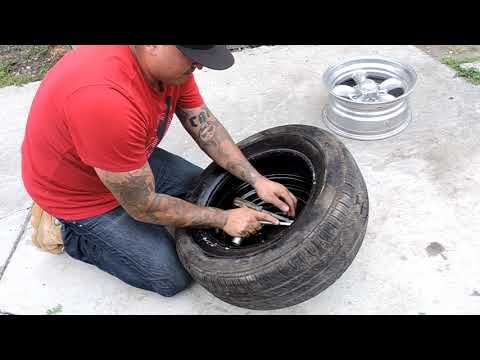 Don’t go by the max, go by the recommended pressure. It will offer you to get slightly better gas mileage. Moreover, the car will have less traction as less tire surface is in contact with the road.
Don’t go by the max, go by the recommended pressure. It will offer you to get slightly better gas mileage. Moreover, the car will have less traction as less tire surface is in contact with the road.
6. In case, you inflate pure nitrogen gas into the tires instead of air, no need to think much. The ways are the same as inflating air into it.
But yes, there are several compelling reasons to use pure nitrogen gas. Surety of more stability of your tire pressure over the long term is one of them.
ConclusionWe are at the cut-off point. We hope the information will help you to get the job done.
In the end, you surely have a crystal clear idea about how to put air in car tires at home. Read the instructions carefully and keep your eyes open while going through the steps, okay?
Happy DIY day!
0003Related materials
If I change wheels, do I need to balance them every season?
Inflating a tire in the city is not a problem.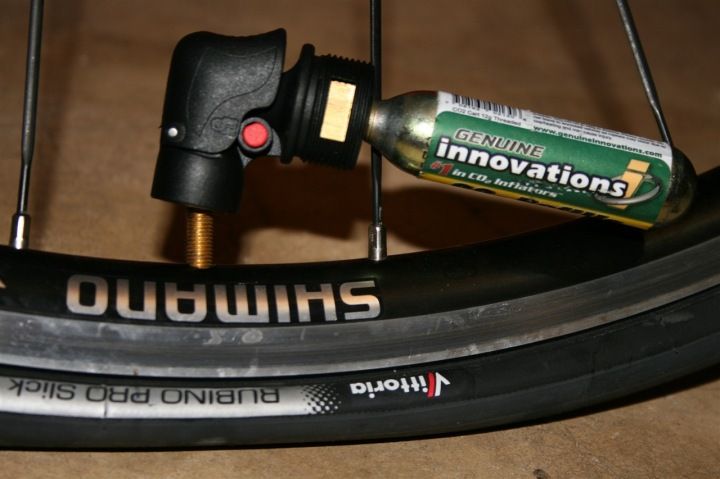 There will always be a thrifty car enthusiast nearby who will lend a compressor. In extreme cases, you can drive to the nearest auto parts store and buy this useful device. But if the need to pump up the wheel caught on a long journey, on a deserted track, you will have to use your ingenuity.
There will always be a thrifty car enthusiast nearby who will lend a compressor. In extreme cases, you can drive to the nearest auto parts store and buy this useful device. But if the need to pump up the wheel caught on a long journey, on a deserted track, you will have to use your ingenuity.
A very banal way is to turn to professionals, that is, truck drivers. The fact is that any truck with pneumatic brakes can supply dried and purified air with high pressure through a hose that a thrifty truck driver always has with him.
Many gas stations now have tire inflation points, and perhaps the easiest way is to hitch a wheel to it and then return to your car in the same way. If all of the above did not work, then read about the tricks that we personally tested for effectiveness:
Attaching a can (any) to the nipple is not so difficult. The pressure inside the cylinder is 1.8-2.8 bar. It is important that the contents do not dissolve the rubber and do not harden, such as building foam.
Here, of course, compressed air canisters are good for blowing, for example, office equipment. But the inner volume of a wheel of a small class car is about 20-25 liters. For pumping, you will need several boxes of cans. Unacceptable!
It is possible to connect the tire valve to the brake master cylinder connection after draining the reservoir. After that, we begin to press the brake pedal in the same way as is usually done when bleeding the brakes when replacing the brake fluid. To inflate the wheel, it will take a gigantic number of clicks. Unacceptable!
Connect the hose to the air path after the turbocharger. The boost pressure in the line between the compressor and the intake valves of conventional (non-sport) engines is not enough to inflate the wheel. No matter how you gasp - unacceptable!
Advanced car enthusiasts know the method of transferring the bead ring over the hump of the rim with the help of an explosion of fuel vapors. The Internet is full of videos on this topic.
The Internet is full of videos on this topic.
It is usually advised to unscrew the spool from the valve. I wonder what will happen if this is not done? We need to keep up the pressure. We conducted an experiment and got an unsatisfactory result. With this method, it is possible to provide a very small pressure in the wheel - about 0.2 bar. The method really allows you to brilliantly cope with the task of transferring the sidewall through the hump, but it is not suitable for pumping!
And this is perhaps the most unusual way to inflate a tire. After conducting an experiment with a large 6-kilogram fire extinguisher, it was possible to raise the pressure by a completely ridiculous amount of a couple of tenths of a bar. And this despite the inverted spool. Everything around was covered with a rather nasty powder. Unacceptable!
The average car owner usually has a powder-type fire extinguisher in the trunk.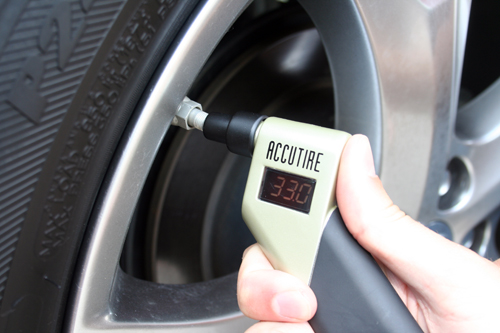 A powder fire extinguisher of a rather large volume worked very badly. It was not possible to pump up the wheel.
A powder fire extinguisher of a rather large volume worked very badly. It was not possible to pump up the wheel.
The average car owner usually has a powder-type fire extinguisher in the trunk. A powder fire extinguisher of a rather large volume worked very badly. It was not possible to pump up the wheel.
If you can attach a hose to the exhaust pipe, then you can inflate the wheel in this way. The engine is able to provide a pressure of two or more bars with a sealed exhaust system and if you “give it a gas”. The method is acceptable, but only as a last resort. The fact is that with this method, the catalytic converter, and even the corrugation of the exhaust system, may suffer.
The most difficult thing is to achieve tightness of the junction of a thin hose with an exhaust pipe. A variety of caps from bottles, washers, water squeegees can go into business. What will be at hand. Electrical tape will help seal the connection.
The most difficult thing is to achieve tightness of the joint between the thin hose and the exhaust pipe. A variety of caps from bottles, washers, water squeegees can go into business. What will be at hand. Electrical tape will help seal the connection.
Related materials
If you want to pump up a wheel, jack up the car! Debunking the Myth
Using a hose, you can transfer part of the air from other wheels to the one we need to inflate. The method is complicated, because the valve mechanism will interfere with such a procedure. If we turn out the spools, we risk leaving several wheels without air. But even if you manage to get by with minimal losses, the pressure in all the wheels will turn out to be insufficient. In the best case, 75% of the pressure will remain in the wheels. Without preliminary preparation, which consists in assembling a hose with two tips like those installed on the compressor, we do not recommend trying this method!
***
Alternative ways to inflate tires are complicated, inconvenient, require advance preparation and can damage your vehicle. Therefore, we advise you to always have a serviceable and inflated spare tire. And just in case, you should carry a portable electric compressor with you. It will be useful not for yourself, but for a less thrifty car enthusiast.
Therefore, we advise you to always have a serviceable and inflated spare tire. And just in case, you should carry a portable electric compressor with you. It will be useful not for yourself, but for a less thrifty car enthusiast.
Our new video
Were export Zhiguli better than usual? Debunking the myth
Another GAZelle competitor: cheap! Even more!
Frame, four-wheel drive, transparent hood (and 224 mm under it) — the Chinese surprised again
Like this article? Subscribe and you will always be in the know!
Driving in Zen
News smi2.ru
0123 11/10/2017
Contents
you need to pump up the wheel and do all this without a pump, since an ordinary car pump and an electrode pump on a tubeless tire are pointless. Air will simply come out along the edges of the tubeless, since the tire does not sit tightly on the disk. You can put it on the disk only with high pressure or a very fast pumping speed - such as compressors at service stations. But not a common automotive compressor, much less a hand pump.
Air will simply come out along the edges of the tubeless, since the tire does not sit tightly on the disk. You can put it on the disk only with high pressure or a very fast pumping speed - such as compressors at service stations. But not a common automotive compressor, much less a hand pump.
Well, actually the situation, for some reason, a situation arose on the road when it was necessary to carry out this very operation to sideboard a tubeless tire - it jumped off, a deflated spare tire, overboarded from a damaged disk to a whole one, etc. How to do it in the field so to speak.
If your car runs on gasoline, then this is good in this situation, if on diesel, then you will need some kind of combustible substance with very fast ignition like gasoline. In this case, consider the gasoline method. So, you have a wheel disassembled - how to board it back? take 30-50 grams of gasoline, pour it into the tubeless tire through the nipple, or from the side.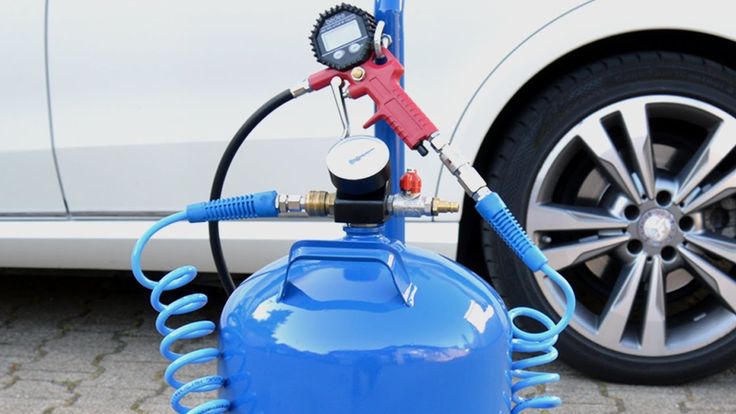
Next, take a lighter or better fire on some extension cord, well, for example, a rag burns on a stick and bring this source of fire to the tire where the rim or nipple where you poured 30-50 grams of gasoline, gasoline vapors will immediately ignite sharply inside tires, which in fact will instantly create quite a high pressure, absolutely sufficient to completely seal a tubeless tire.
Yes, I forgot to say, the spool must first be unscrewed - so that the tire does not burst and ignition occurs well. After such a landing of tires on the rim, pressure will also be created in it, usually 0.5-0.7 atmospheres, in fact, on such a wheel you can even quietly drive to the nearest hundred. But it is better to pump it up with a pump, if any.
Don't pour too much gasoline, as it can corrode rubber over time, you can also use various flammable lighter fluids and aerosols. Often, for a disc size of 15 and standard passenger rubber, 5 cubic meters of gasoline in a syringe is enough, this is about 10-20 grams.